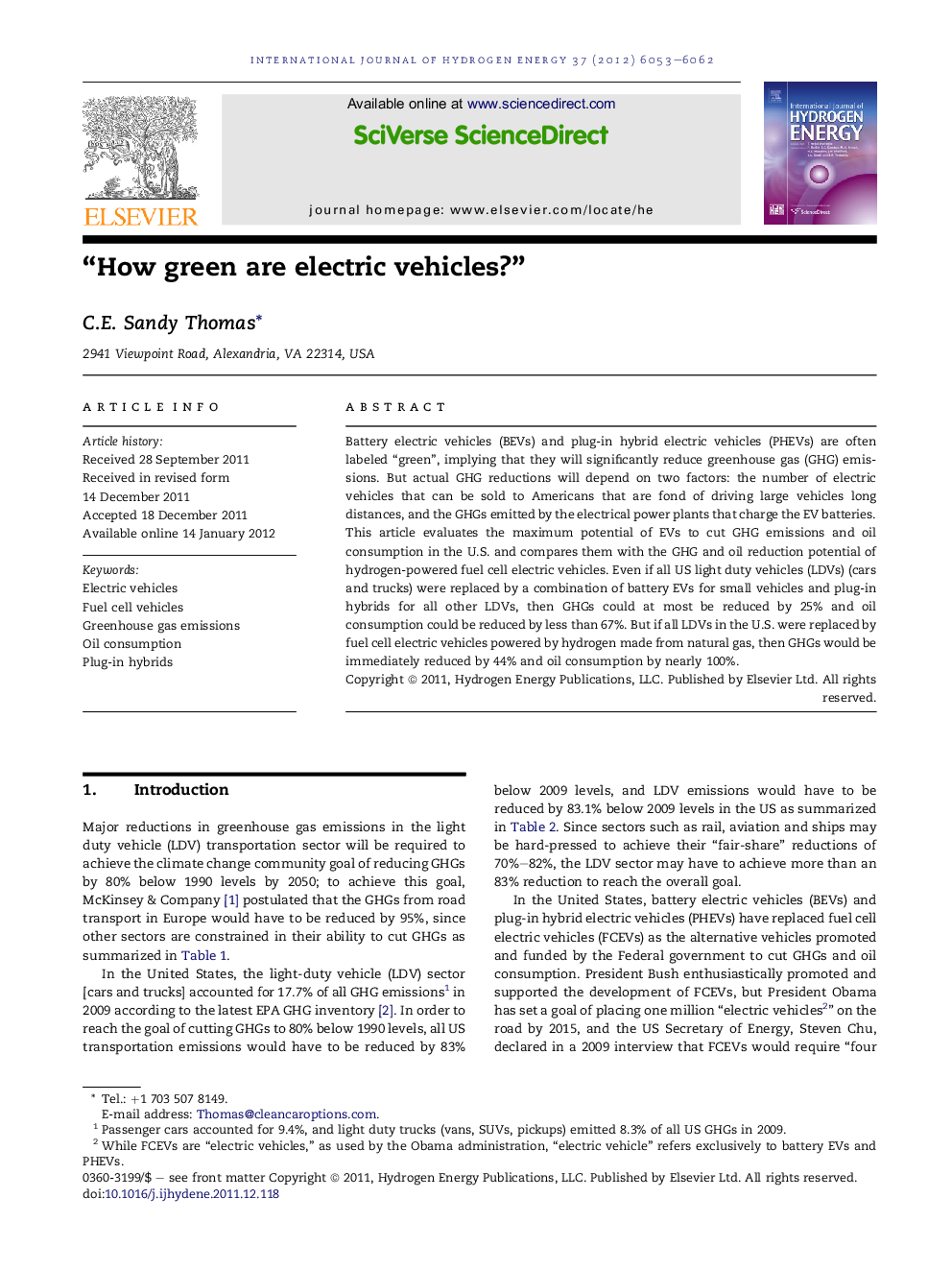| Article ID | Journal | Published Year | Pages | File Type |
|---|---|---|---|---|
| 1276897 | International Journal of Hydrogen Energy | 2012 | 10 Pages |
Battery electric vehicles (BEVs) and plug-in hybrid electric vehicles (PHEVs) are often labeled “green”, implying that they will significantly reduce greenhouse gas (GHG) emissions. But actual GHG reductions will depend on two factors: the number of electric vehicles that can be sold to Americans that are fond of driving large vehicles long distances, and the GHGs emitted by the electrical power plants that charge the EV batteries. This article evaluates the maximum potential of EVs to cut GHG emissions and oil consumption in the U.S. and compares them with the GHG and oil reduction potential of hydrogen-powered fuel cell electric vehicles. Even if all US light duty vehicles (LDVs) (cars and trucks) were replaced by a combination of battery EVs for small vehicles and plug-in hybrids for all other LDVs, then GHGs could at most be reduced by 25% and oil consumption could be reduced by less than 67%. But if all LDVs in the U.S. were replaced by fuel cell electric vehicles powered by hydrogen made from natural gas, then GHGs would be immediately reduced by 44% and oil consumption by nearly 100%.
► Battery EVs are only as green as the power plants that charge their batteries. ► Battery EVs are only suitable for small vehicles traveling short distances. ► Other analysts have not accounted for the limited market potential of EVs. ► EVs could at best reduce greenhouse gases by 4.8% and oil use by 24%. ► But hydrogen fuel cell electric vehicles could cut GHGs by 41% and oil by 99%.
